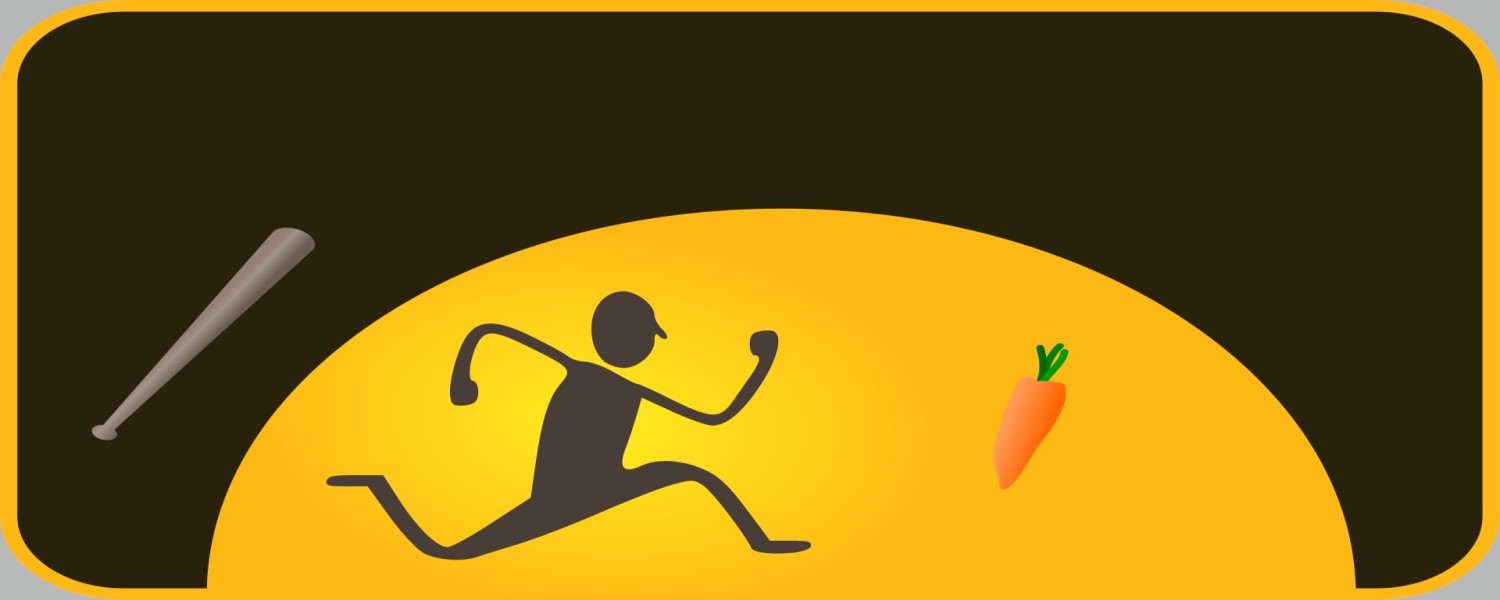Carrots and Sticks: 7 Reasons They Don’t (Usually) Work!
Besides being a statistician and an educator, W. Edwards Deming was known as one of the most pre-eminent management gurus in modern history. In his famous book, The New Economics, Deming tells an interesting story which occurred during the height of his fame.
“A man, not an employee of the hotel, picked up my bag at the registration desk of a hotel in Detroit, carried it up to my room. The bag was heavy, I was exhausted and hungry, hoping to get into the dining room before it would close at 11 p.m. I was ever so grateful to him; fished out two dollar bills for him. He refused them. I had hurt his feelings, trying to offer money to him. He had carried the bag for me, not for pay. My attempt to pay him was, in effect, an attempt to change our relationship. I meant well but did the wrong thing. I resolved to be careful.” 2
That story is a great example of why many times carrots and sticks, otherwise known as extrinsic motivators, don’t work!
What are Carrots and Sticks?
Carrots and sticks or extrinsic motivators are a type of motivation that comes from outside yourself; that is, doing something to obtain some type of reward (the carrot) or to avoid some type of punishment (the stick).

Whereas intrinsic motivation is the motivation that comes from within yourself; that is, doing something for the sheer pleasure of doing it.
Of course, people do need to make money to live a good quality of life – so some extrinsic rewards are necessary.
But as Dan Pink says in Drive: The Surprising Truth About What Motivates Us, only to a point:
“People have to earn a living. Salary, contract payments, some benefits, a few perks are what I call “baseline rewards.” If someone’s baseline rewards aren’t adequate or equitable, her focus will be on the unfairness of her situation and the anxiety of her circumstance. You’ll get neither the predictability of extrinsic motivation nor the weirdness of intrinsic motivation. You’ll get very little motivation at all. But once we’re past that threshold, carrots and sticks can achieve precisely the opposite of their intended aims. Mechanisms designed to increase motivation can dampen it. Tactics aimed at boosting creativity can reduce it. Programs to promote good deeds can make them disappear. Meanwhile, instead of restraining negative behavior, rewards and punishments can often set it loose—and give rise to cheating, addiction, and dangerously myopic thinking.” 1
What ends up happening in many cases is that by using carrots and sticks (rewards or punishments) you can inadvertently turn something that was interesting and fun into a boring task. You can also turn something that was seen by someone as play into something that is now seen as work. In essence, by doing this you are reducing someone’s intrinsic motivation and instantly killing their creativity and performance.
“Why does this happen, why don’t carrots and sticks usually work?” you ask?
That’s a good question and one which we will address in the next section. Oh, and by the way, as for the “usually” part – there are times when carrots and sticks do work, and we will cover that in a bit too.
7 Reasons Why Carrots and Sticks Don’t (Usually) Work
In his book, Pink describes 7 reasons why carrots and sticks don’t (usually) work:
(1) They can extinguish intrinsic motivation.
While many of us use rewards to help increase someone else’s motivation to do something, what typically happens is that it has the unintentional effect of reducing their intrinsic motivation instead.
The reason being is that carrots and sticks or “If-then” rewards cause people to lose some of their autonomy meaning they are no longer in control which limits their enjoyment of the task or activity.
(2) They can diminish performance.
Many studies have shown that pay for performance can actually lead to worse performance! A 2009 study by the London School of Economics analyzed 51 studies of corporate pay for performance plans and concluded: “We find that financial incentives may indeed reduce intrinsic motivation…As a consequence, the provision of incentives can result in a negative impact on overall performance,” 3
(3) They can crush creativity.
For most tasks that necessitate problem-solving, creativity and inventiveness, carrots and sticks can be dangerous. Intrinsic motivation, or doing something because it is challenging, fun or interesting is necessary for high levels of creativity while carrots and sticks stifle creativity.
(4) They can crowd out good behavior.
A study was done to see how paying people to donate blood would increase their willingness to give blood. And as I am sure you expected, it had the opposite result and it led to less blood donation? Why? It tainted an act seen by most as altruistic which decreased people’s intrinsic motivation to do something noble.
(5) They can encourage cheating, shortcuts, and unethical behavior.
This is an obvious one, goals such as sales targets, grades, standardized test scores, commissions can often have dangerous side effects. The examples are numerous, for example, Enron setting lofty sales goals and trying to reach them by any means necessary lead to the company’s demise. What happens is that by using extrinsic motivation only, people often take the fastest road there even if it means doing unethical or illegal things.
(6) They can become addictive.
Pink quotes the Russian economist Anton Suvorov who explains: “Rewards are addictive in that once offered, a contingent reward makes an agent expect it whenever a similar task is faced, which in turn compels the principal to use rewards over and over again. And before long, the existing reward may no longer suffice. It will quickly feel less like a bonus and more like the status quo—which then forces the principal to offer larger rewards to achieve the same effect.” 1
(7) They can foster short-term thinking.
In areas where carrots and sticks are prevalent, many people work only to the point of attaining the reward and then stop. For example, students who get a gift certificate for reading 5 books read them and stop, eschewing a lifetime of reading and learning.
When and How to Use Carrots and Sticks
It all comes down to the type of job, task or activity the person is doing.
Carrots and sticks do work in some circumstances. However, for a lot of tasks, they don’t work at all as we have seen, and in many cases, they can actually do harm!
If the task is a routine and ruled based task that doesn’t need a lot of creativity or passion, carrots and sticks can give a potential motivational boost without potentially harmful side-effects. For example, having all of your employees’ chip in to stuff envelopes over the weekend.
In this case, Pink offers 3 practices that can enhance your chance of success:
(1) Tell them why: Whatever the uninteresting task is you can make it more meaningful and engaging by explaining how it’s part of a bigger purpose.
(2) Acknowledge the boring task: As Pink says: “This is an act of empathy, of course. And the acknowledgment will help people understand why this is the rare instance when “if-then” rewards are part of how your organization operates.” 1
(3) Let them do it their way: Let them know what you need the outcome to be and give them the freedom to do it how they please. In other words, give them some autonomy.

BUT – For Tasks That Require…
…conceptual or cognitive skills and creativity, those external rewards can narrow our focus and be counterproductive.
So, in these cases where we want to do things because they matter to us, because we like doing them, or because they are part of something important to us, we need to instead leverage intrinsic motivation.
Pink offers three elements of intrinsic motivation that can be leveraged for jobs that require creativity and other cognitive skills: autonomy, mastery, purpose. Using these 3 elements can help you ignite people’s intrinsic fire:
Autonomy – being able to direct our own lives and have some control over what we do.
Mastery – having the opportunity for improvement.
Purpose – being part of something that we are connected to.
There are a few specific ways that we can use to light people’s intrinsic fire using autonomy, mastery, purpose that we covered in a previous post.
In His Book, Pink Makes a Great Point…
…when he says:
“Despite the work of a few skilled and passionate popularizers—in particular, Alfie Kohn, whose prescient 1993 book, Punished by Rewards, lays out a devastating indictment of extrinsic incentives—we persist in trying to motivate people this way. Perhaps we’re scared to let go of Motivation 2.0 (carrots and sticks), despite its obvious downsides. Perhaps we can’t get our minds around the peculiar quantum mechanics of intrinsic motivation.” 1
Deming, despite being the master of this stuff proves Pink’s point in telling another story right after the one in the introduction:
“And then I did it again. As I arrived via U.S. Air at National Airport, Washington, a member of the crew picked up my bag (heavy), carried it off the aeroplane, escorted me with the other hand through the airport, down and out to my driver waiting for me. Grateful, I hurriedly found a five-dollar bill and pushed it toward her. “Oh, no” I had done it again!…I wonder how many times I have made this same mistake” 2
Don’t we all, Ed, don’t we all!
Until next time, be careful when using carrots and sticks and as always…PYMFP!
–Rick
If you enjoyed this post, it would mean the world to us if you shared it with people you care about via any of the social media platforms below!
Popular Previous Posts:
Colin Powell’s 13 Rules: Leadership Gems from the General!
9 Public Speaking Secrets of the World’s Top Orators
Two Former WH Staffers on Owning Up to Your Mistakes
This is How to Be More Likeable Using the Thread Theory!
References
1 Drive: The Surprising Truth About What Motivates Us
2 The New Economics by W. Edwards Deming
3 “LSE: When Performance-Related Pay Backfires,” Financial, June 25, 2009.

The carrot and stick approach does not work, ever. The carrot isn’t worth the effort, and the stick portion really means you did not earn a carrot. I don’t know of anyone who managed like this.
Deming should have said something like “It’s been a long day and I’m tired. Thanks for your help, it’s greatly appreciated.” Of course, that problem seldom exists anymore since most people now use valises that have built in wheels.
The only time I tip in a hotel is if I check a bag with the concierge and have it delivered to the room later in the day.
So now I’m going to eat the carrot as a snack, and toss the stick into the wood pile where it belongs.
Hi Dave, I agree and disagree. There are RARE times when carrots can work which is when it comes to boring/repetitive tasks, but that’s it, otherwise, totally agree – it doesn’t work. Hope you enjoyed the carrot! Lol. Take care, Rick